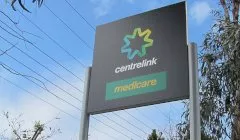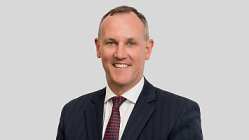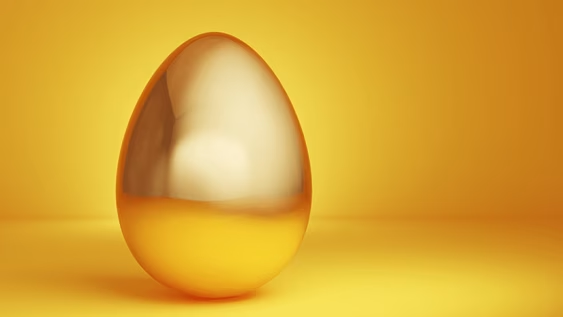Save
Child care subsidy changes would incentivise working parents
Almost 30,000 additional workdays per week and close to $700 million in the GDP could be created each year by revamping Australia’s Child Care Subsidy model, a big four accounting firm has said.
Child care subsidy changes would incentivise working parents
Almost 30,000 additional workdays per week and close to $700 million in the GDP could be created each year by revamping Australia’s Child Care Subsidy model, a big four accounting firm has said.

Consulting giant KPMG has reported that changes to the Child Care Subsidy (CCS) would better enable parents to return to work, but also see a doubling of the expense to the government that would be required to boost the subsidy.
KPMG’s report addresses the problem caused by an interaction of Australia’s tax and transfer system, which currently discourages secondary earners in families from working more hours.
“Our economic modelling in this report shows the proposals would generate an additional $678 million – using conservative assumptions – at a cost of $368 million in extra CCS spending,” Grant Wardell-Johnson, KPMG’s partner, economics and tax centre, said.
The firm has used the example of a healthcare worker earning $50,000 a year through working four days a week.

As the system currently stands, this employee would currently only keep $1,500 of the $12,500 earned from that fourth day of work over the course of the year: a loss of 88 per cent.
Under KPMG’s proposal, this worker would keep almost 50 percent of the money earned from that fourth day’s work. The Workforce Disincentive Rate (WDR) cap (marginal income tax rate plus 20 percent) would be 54.5 percent instead of the current 88 percent and the health worker would receive a top-up payment of $4,188.
KPMG Australia chairman Alison Kitchen said, “The main proposal is to cap the WDR at the secondary earner’s – usually a woman – marginal income tax rate, plus 20 percentage points. There would then be a top-up payment through the CCS system.”
President of Chief Executive Women Sue Morphet believes updating the CCS will better enable women to return to the workforce.
“Increased affordability of child care can be a key enabler of greater parental equality in our society,” she said.
“Enduring norms regarding gender and work have proven harmful to the economic welfare of women, and our society as a whole,” Ms Morphet continued.
She considered reducing financial disincentives for parents seeking to work full-time as “paramount”.
“If we aspire to have equal workforce participation and leadership progression, we must ensure men and women are equally empowered, socially and financially, to share the income-generating and care-giving roles.”
About the author

About the author


Tax saving
$20,000 instant asset write-off extension welcomed, but calls for broader support grow
The Australian government's decision to extend the $20,000 instant asset write-off into the next financial year has been met with approval from business leaders. However, there are growing calls for ...Read more

Tax saving
The downsizer dividend: How targeted tax levers could unlock housing supply in Australia
A call by Raine & Horne to incentivise seniors to move to smaller homes has kicked off a wider policy conversation that reaches well beyond real estate. If designed well, a targeted package could ...Read more

Tax saving
Raine & Horne's bold move could unlock housing supply but what are the hidden risks
Raine & Horne’s call for targeted tax incentives to encourage empty nesters to ‘rightsize’ isn’t just another sector wish list; it’s a potential lever to free up family homes, ease rental ...Read more

Tax saving
From annual check-ups to always‑on: how modern portfolio reviews unlock after‑tax alpha
The era of once‑a‑year portfolio check‑ins is over. Continuous, tech‑enabled reviews now drive returns through tax efficiency, risk control and behavioural discipline—especially in a high‑rate ...Read more

Tax saving
Navigating tax laws for capital gains in 2023
The landscape of Australian tax laws surrounding capital gains is ever-changing, with 2023 being no exception. Read more

Tax saving
What you need to know about the tax implications of crypto
One million Aussies are now invested in crypto, but many have not thought about how these investments will affect them at tax time. Read more

Tax saving
Welfare overhaul could give recipients a leg-up
Australia’s Centrelink recipients who’ve been doing it tough are in for a potentially easier time if the federal government pursues ambitious reforms that could provide sturdier safety nets. Read more

Tax saving
Students should think twice before tapping into their super
Former students might want to think carefully before they look to take advantage of the federal government’s biggest first home buyer incentive. Read more

Tax saving
$20,000 instant asset write-off extension welcomed, but calls for broader support grow
The Australian government's decision to extend the $20,000 instant asset write-off into the next financial year has been met with approval from business leaders. However, there are growing calls for ...Read more

Tax saving
The downsizer dividend: How targeted tax levers could unlock housing supply in Australia
A call by Raine & Horne to incentivise seniors to move to smaller homes has kicked off a wider policy conversation that reaches well beyond real estate. If designed well, a targeted package could ...Read more

Tax saving
Raine & Horne's bold move could unlock housing supply but what are the hidden risks
Raine & Horne’s call for targeted tax incentives to encourage empty nesters to ‘rightsize’ isn’t just another sector wish list; it’s a potential lever to free up family homes, ease rental ...Read more

Tax saving
From annual check-ups to always‑on: how modern portfolio reviews unlock after‑tax alpha
The era of once‑a‑year portfolio check‑ins is over. Continuous, tech‑enabled reviews now drive returns through tax efficiency, risk control and behavioural discipline—especially in a high‑rate ...Read more

Tax saving
Navigating tax laws for capital gains in 2023
The landscape of Australian tax laws surrounding capital gains is ever-changing, with 2023 being no exception. Read more

Tax saving
What you need to know about the tax implications of crypto
One million Aussies are now invested in crypto, but many have not thought about how these investments will affect them at tax time. Read more

Tax saving
Welfare overhaul could give recipients a leg-up
Australia’s Centrelink recipients who’ve been doing it tough are in for a potentially easier time if the federal government pursues ambitious reforms that could provide sturdier safety nets. Read more

Tax saving
Students should think twice before tapping into their super
Former students might want to think carefully before they look to take advantage of the federal government’s biggest first home buyer incentive. Read more













